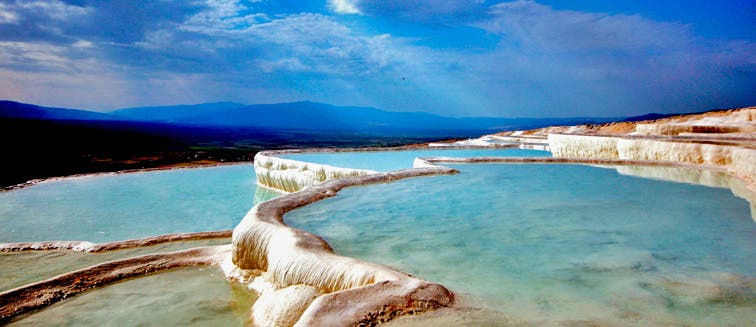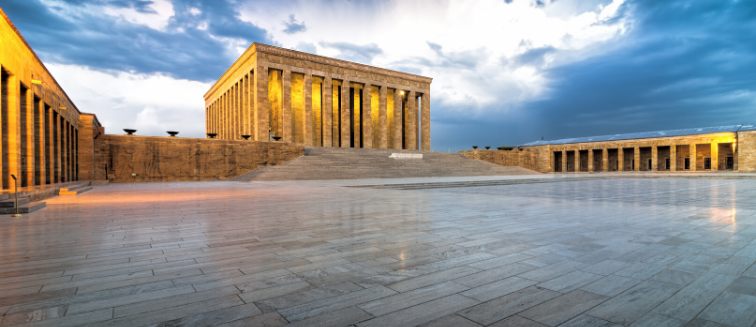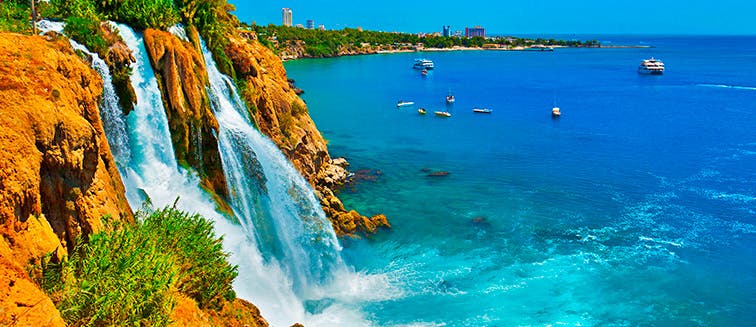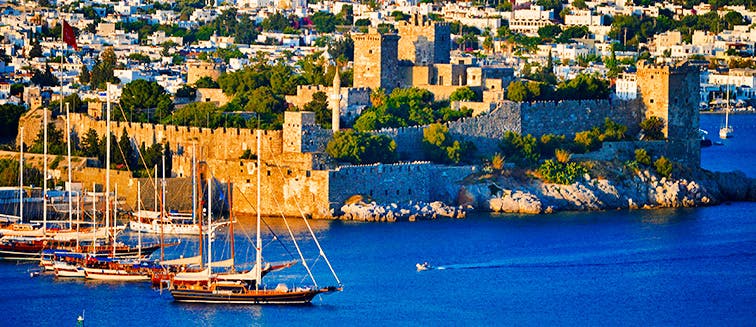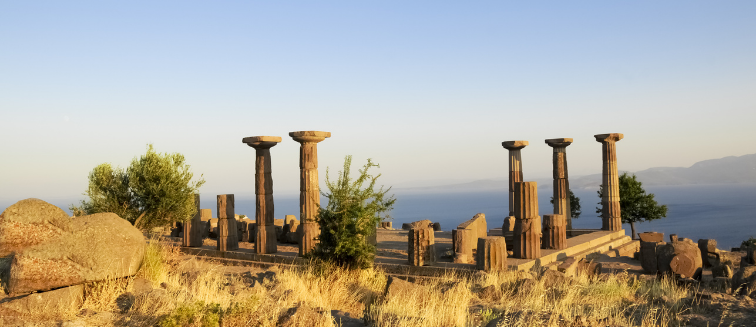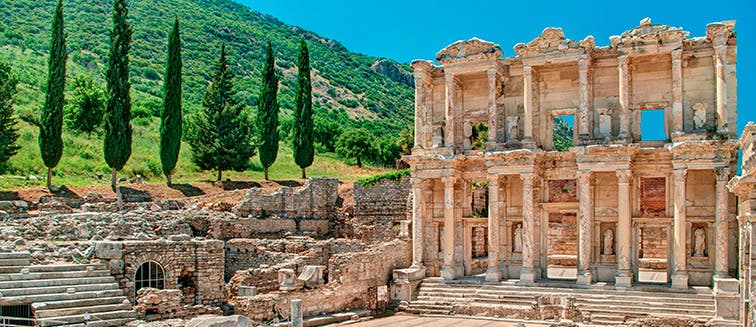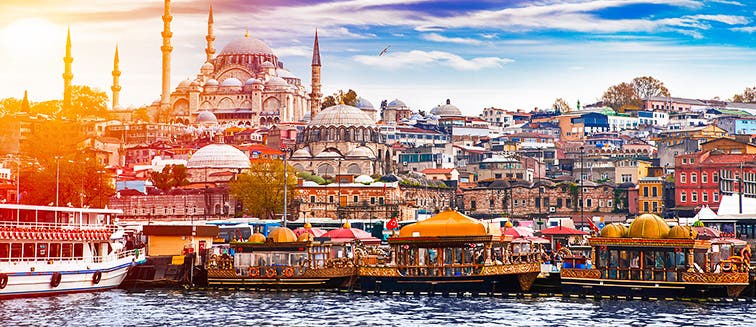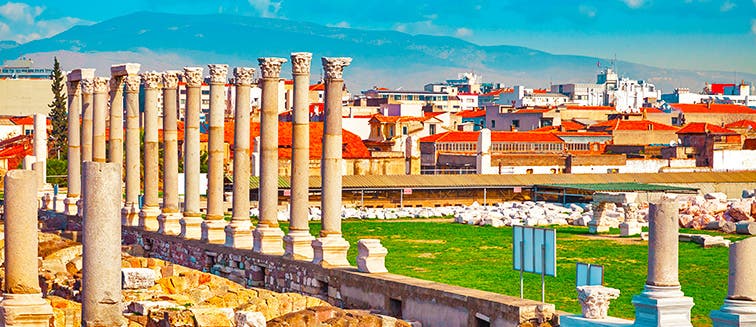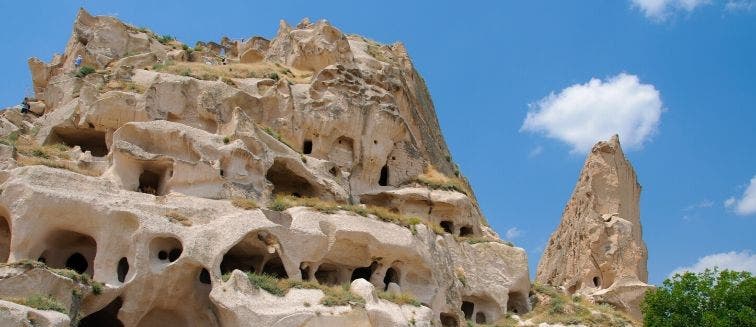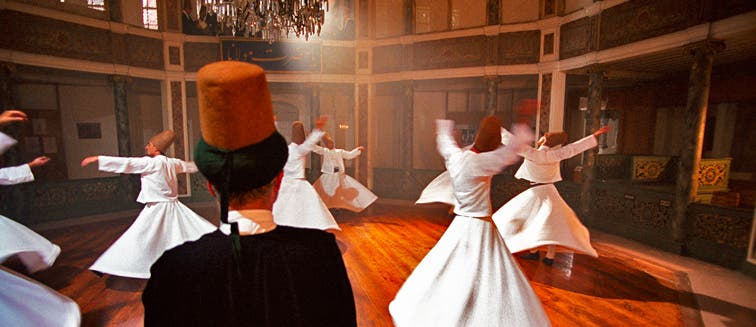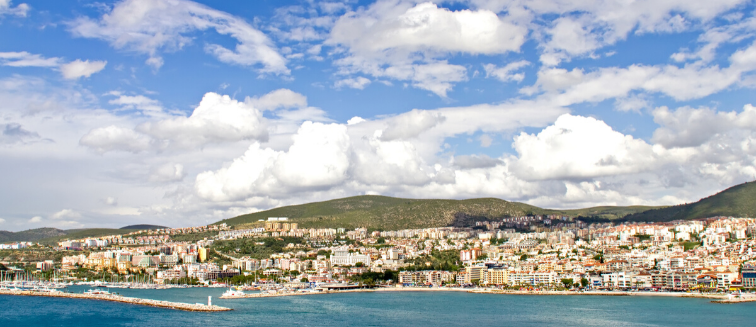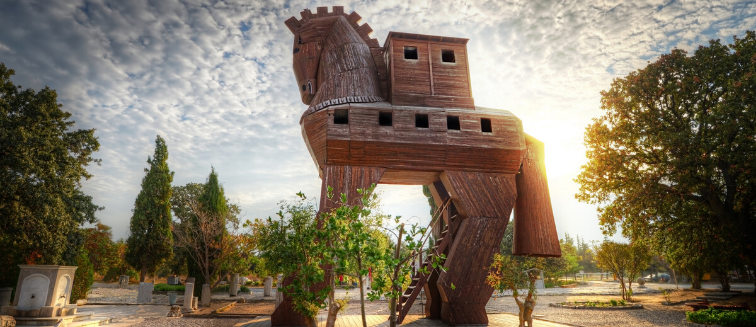Africa
Americas
Asia
Europe
Oceania
Holidays to Europe (95 available)
Albania(2)
Austria(7)
Baltic States(3)
Belgium(5)
Croatia(3)
Cyprus(1)
Czech Republic(5)
Denmark(1)
England(12)
Finland(2)
France(15)
Germany(8)
Greece(10)
Hungary(5)
Iceland(6)
Ireland(9)
Italy(13)
Montenegro(1)
Netherlands(5)
Northern Ireland(2)
Norway(9)
Portugal(9)
Romania(1)
Scotland(6)
Slovakia(1)
Spain(9)
Sweden(2)
Switzerland(4)
By Season
By Interest
By Group
What to see in Turkey
Pamukkale
Tourist attractions Pamukkale
Turkey is filled with otherworldly landscapes and natural spectacles, but Pamukkale is one of the most exquisite displays of the beauty of nature that you can imagine. White travertine terraces of bright blue water and snow-white limestone decorate the valley sides of Pamukkale, known as the ‘Cotton Castle’. These unique natural formations make a trip to Pamukkale an unmissable highlight of any tour of Turkey. These natural pools were formed as a result of centuries of limestone erosion by thermal springs, and the mineral-rich water of Pamukkale’s pools have long-since attracted visitors thanks to their reputedly therapeutic properties. Hierapolis, the ancient city built around Pamukkale’s natural pools, pays testament to this, as it was constructed around the 2nd-century BC as a spa town to make the most of the warm, mineral-rich waters of this region. If you travel to Pamukkale today you’ll be astounded by the well-preserved ruins of ancient Hierapolis, with its collonaded streets and traditional Roman bathhouses. Many of the hotels in Pamukkale boast special pools filled with thermal spring water, although supplies of the mineral-rich water are restricted in order to preserve the delicate balance of the natural limestone pools. A holiday to Pamukkale combines the natural spectacle of its travertine terraces with the atmospheric streets of its ruined Hierapolis, making it one of Turkey’s most coveted destinations and a UNESCO World Heritage Site.
What to see in Pamukkale
It’s little wonder that Pamukkale is a must-see destination for travellers on a tour of Turkey as there are many diverse sights to explore in and around the town. The ‘Cotton Castle’ of travertine pools are by far the most exciting thing to see in Pammukale. Bright blue pools of thermal water, suspended on the edge of Pamukkale cliff are open to visitors, who can walk and splash through the calcified terraces, although there is a strict no-shoe policy to protect the site from pollution and erosion. Be sure to wear your swimming gear as the higher level pools are perfect for enjoying a relaxing soak and taking in the spectacular views of the rural Denizli. Avoid the crowds by visiting first thing in the morning or late in the afternoon, and keep in mind that this region of Turkey can be surprisingly cold during the winter months, so the best time of year to visit is in the spring or autumn.
Once you’ve conquered the limestone cliffs of Pamukkale it’s time to explore the ancient city of Hierapolis. The Hierapolis Theatre is a good place to start and the breathtaking views across the ruined city and Pamukkale below are well worth the walk. Dating back to Roman times, this two-tiered amphitheatre is remarkably well-preserved. You can even see the remains of a number of luxurious imperial viewing boxes, once frequented by the highest-ranking Romans. Be sure to leave time to explore the ancient streets of Hierapolis when you visit Pamukkale, as its atmospheric, collonaded streets paint a vivid picture of life in a Roman spa-town. Dating back to the 2nd-century BC, if you visit Hierapolis today you’ll see a number of ancient ruins including a necropolis, a Byzantine Church and the white marble Temple of Apollo, built upon the mysterious Plutonium, an underground cave that was once believed to be a gateway to the underworld.
One of the most popular things to do in Pamukkale is to swim in the Antique Pool, once the heart of ancient Hierapolis. Today, constantly refreshed by an inflow of hot calcium-laden mineral water, this former Roman bath is the most popular place to enjoy Pamukkale’s thermal springs. Maintaining an average temperature of 36 degrees celsius, bathers can follow in the footsteps of Roman aristocrats as they float between submerged Roman columns whilst soothing their travel-weary muscles.
If the intriguing ruins of Hierapolis have left you curious to learn more, the on-site Hierapolis Museum is home to some of the original sites most valuable relics including decorative stone reliefs and statues. A wander through this small museum can really help to bring the ancient Hierapolis to life.
Finally, at the foot of the limestone cliffs and travertine pools, charming Pamukkale Village is where you’ll find a good array of accommodation options, traditional Turkish restaurants and tourist-friendly cafes, bars and souvenir shops. Spending an afternoon strolling through its Natural Park or boating on the lake against the backdrop of the ‘Cotton Castle’ is a great way to obtain a different perspective of the glistening white pools.
OUR BEST TRIPS TO PAMUKKALE
YOU ALSO LIKE
Armenia
Notify me when available
Bahrain
1 Trips
Israel
Notify me when available
Jordan
6 Trips
Kazakhstan
1 Trips
Kyrgyzstan
Notify me when available
Lebanon
Notify me when available
Oman
Notify me when available
Qatar
4 Trips
Turkey
9 Trips
Uzbekistan
2 Trips
Cambodia
4 Trips
Thailand
6 Trips
Vietnam
6 Trips
Myanmar
Notify me when available
Indonesia
8 Trips
Malaysia
2 Trips
Philippines
2 Trips
Singapore
2 Trips
Laos
Notify me when available
India
10 Trips
Bhutan
2 Trips
Nepal
5 Trips
Sri Lanka
5 Trips
Maldives
6 Trips
United Arab Emirates
4 Trips
Saudi Arabia
2 Trips
China
3 Trips
Japan
9 Trips
Hong Kong
1 Trips
South Korea
6 Trips
Tibet
Notify me when available
Mongolia
Notify me when available
Taiwan
Notify me when available
Tourist attractions turkey
Points of interests
- Trips to Ankara
- Trips to Antalya
- Trips to Bodrum
- Trips to Çanakkale
- Trips to Cappadocia
- Trips to Éfeso
- Trips to Istanbul
- Trips to Izmir
- Trips to Kaymakli Underground City
- Trips to Konya
- Trips to Kusadasi
- Trips to Pamukkale
- Trips to Troy
Other Points of interests
- Trips to Ajloun Castle
- Trips to Almaty
- Trips to Amman
- Trips to Aqaba
- Trips to Beirut
- Trips to Beit She'an
- Trips to Bishkek
- Trips to Bukhara
- Trips to Caesarea
- Trips to Dana Nature Reserve
- Trips to Dead Sea
- Trips to Dead Sea
- Trips to Doha
- Trips to Galilee
- Trips to Garni
- Trips to Haifa
- Trips to Isfahan
- Trips to Jerash
- Trips to Jericho
- Trips to Jerusalem
- Trips to Karakol
- Trips to Katara Cultural Village
- Trips to Khiva
- Trips to Khor-Virap
- Trips to Lake Sevan
- Trips to Little Petra
- Trips to Manama
- Trips to Mount Nebo
- Trips to Muscat
- Trips to Nizwa
- Trips to Noravank
- Trips to Nur-Sultan
- Trips to Pasargada
- Trips to Persepolis
- Trips to Petra
- Trips to Ras al Hadd
- Trips to Red Sea
- Trips to Safed
- Trips to Samarkand
- Trips to Shiraz
- Trips to Souq Waqif
- Trips to Tashkent
- Trips to Tehran
- Trips to Tel Aviv
- Trips to Temple Mount
- Trips to The Corniche
- Trips to The Pearl-Qatar
- Trips to Vagharshapat
- Trips to Wadi Rum
- Trips to Wahiba Sands
- Trips to West Bay
- Trips to Yadz
- Trips to Yerevan
Countries Nearby
- Armenia Trips
- Bahrain Trips
- Bhutan Trips
- Cambodia Trips
- China Trips
- Hong Kong Trips
- India Trips
- Indonesia Trips
- Israel Trips
- Japan Trips
- Jordan Trips
- Kazakhstan Trips
- Kyrgyzstan Trips
- Laos Trips
- Lebanon Trips
- Malaysia Trips
- Maldives Trips
- Mongolia Trips
- Myanmar Trips
- Nepal Trips
- Oman Trips
- Philippines Trips
- Qatar Trips
- Saudi Arabia Trips
- Singapore Trips
- South Korea Trips
- Sri Lanka Trips
- Taiwan Trips
- Thailand Trips
- Tibet Trips
- Turkey Trips
- United Arab Emirates Trips
- Uzbekistan Trips
- Vietnam Trips
Trip Styles
- Solo Tours in China Trips
- China Cultural Tours Trips
- Family India Trips
- India Solo Travel Offers Trips
- India Nature Vacation Packages Trips
- Solo Trips to Indonesia Trips
- Indonesia Couples Tour Packages Trips
- Indonesia Nature Vacation Packages Trips
- Family Japan Trips
- Japan Solo Travel Packages Trips
- Japan Cultural Tours Trips
- Solo Adventures in Jordan Trips
- Thailand Nature Packages Trips
- Family Thailand Trips
- Thailand Tours for Couples Trips
- Thailand Solo Tours with Exoticca Trips
- Turkey Cultural Tours Trips
- Turkey: A Romantic Haven for Couples Trips
- Vietnam Solo Travel Packages Trips
- Vietnam Nature Vacation Packages Trips
- Vietnam Cultural Tours Trips
Susbscribe to our newsletter and join Exoticca GO
The best travel deals
Exclusive promotions
Expert travel tips
